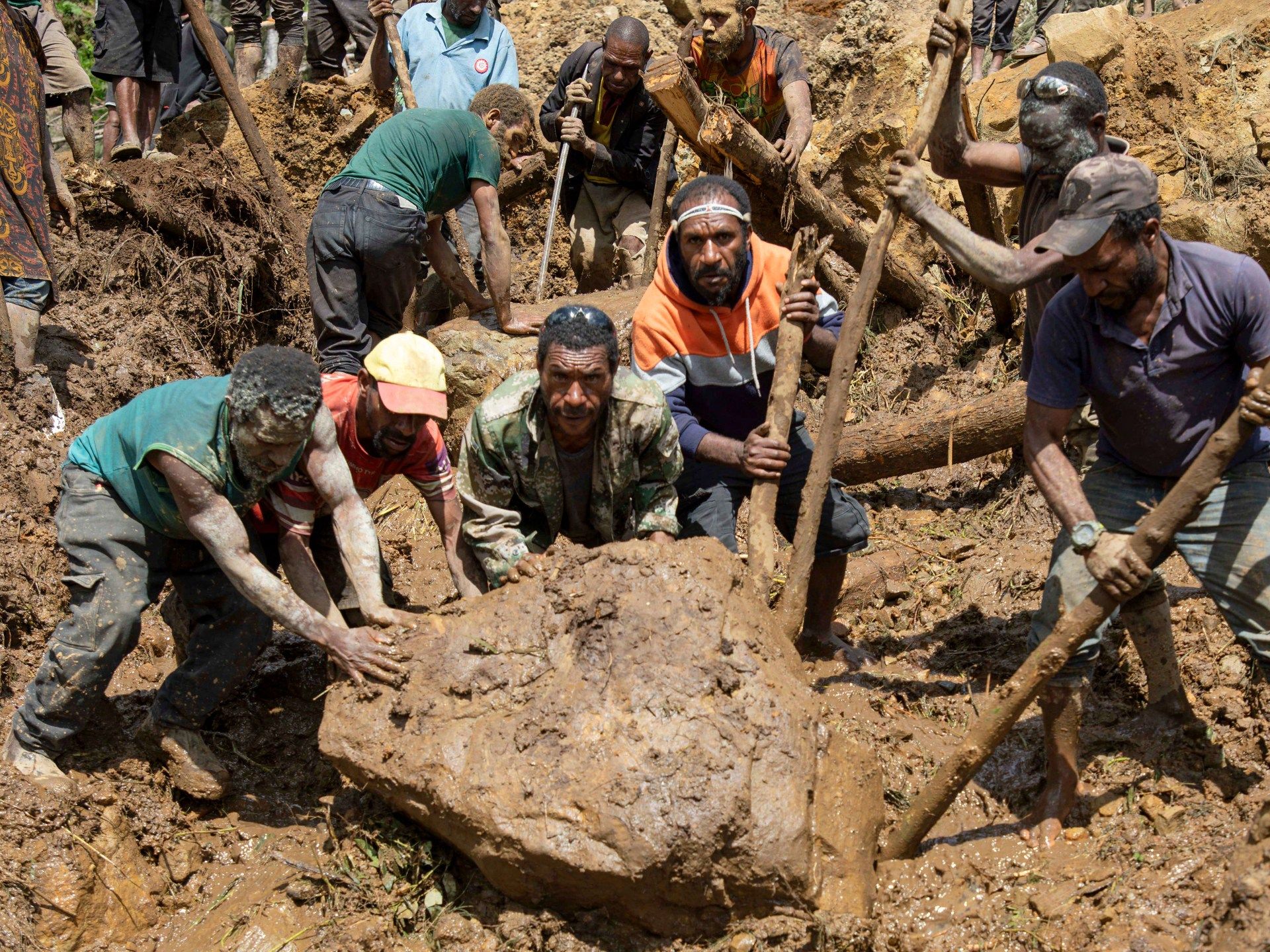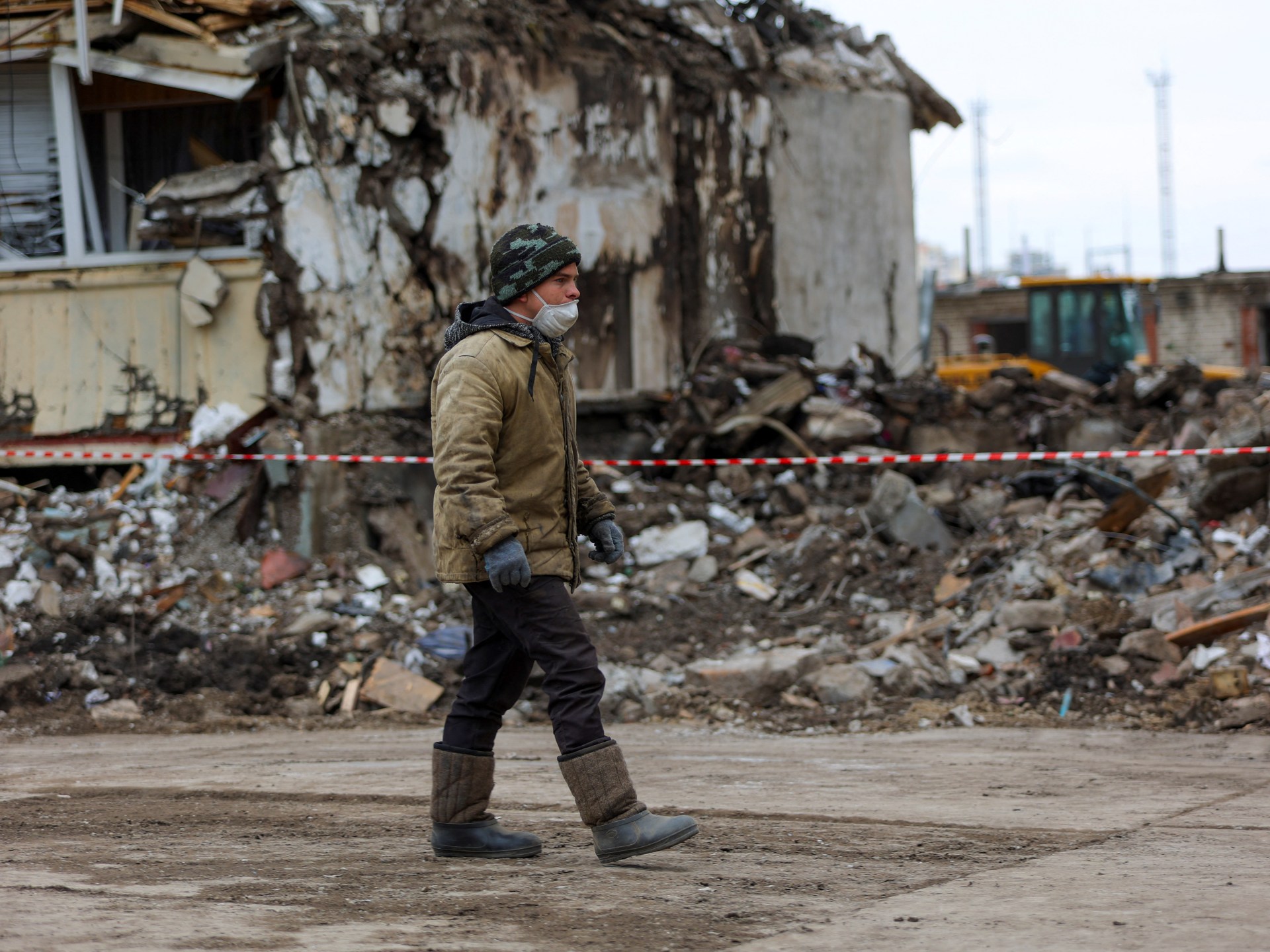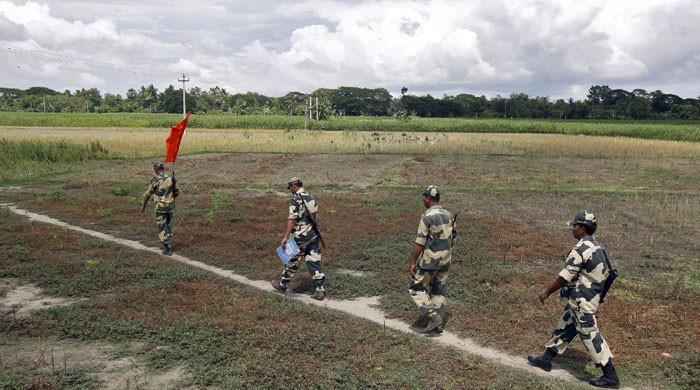Hopes are fading that some 2,000 people buried by a landslide in Papua New Guinea's Enga province will be found alive, a United Nations official said.
“It's not a rescue mission, it's a recovery mission,” said Niels Kraaier of UNICEF Papua New Guinea. “It is very unlikely that they survived.”
Rescue efforts at the Mount Mungalo landslide site have been led by local residents, many of whom lost their entire families in the landslide, which wiped out an entire hillside community around 3 Friday morning (18:00 GMT Thursday).
A couple survived the calamity “by a miracle.” Only six bodies have been recovered, while the Papua New Guinea National Disaster Center estimates that around 2,000 people are still to be found.
The landslide also swept away orchards and roads, hampering rescue efforts and leaving villagers worried about finding enough to eat as they search for their loved ones.
“People are digging with their hands and fingers,” Enga provincial administrator Sandis Tsaka told the AFP news agency on Tuesday.
“Entire families” were “buried under the rubble,” Tsaka said, adding that the hillside community of homes, businesses, churches and schools had been “completely annihilated.”
“It is the surface of the moon. “They are just stones,” she said.
“I have 18 members of my family buried under the ground I am standing on,” said Evit Kambu, a village resident.
Fears are also rising in nearby villages as the terrain continues to change.
“Every hour you hear the rocks breaking; it's like a bomb or a gunshot and the rocks keep falling,” Tsaka said.
Local authorities are now trying to evacuate 7,900 people to prevent further loss of life, he added.
Tsaka spoke at an emergency online meeting organized by the UN with foreign governments on Tuesday morning and called for immediate assistance to address landslide risks, manage the response and ensure rapid delivery of supplies.
He acknowledged that PNG, one of the poorest countries in Asia Pacific, was unprepared to deal with the magnitude of the tragedy.
It is unclear how many people were living in the hillside community in dense rainforest when the landslide occurred.
The last official census was 24 years ago.
The population of the small roadside community had reportedly increased in recent months and years, Glenn Banks, a professor of geography at Te Kunenga Ki Purehuroa: Massey University in New Zealand, told Al Jazeera.
People had moved to the area hoping to find gold in open-pit dumps and dumps at the nearby Porgera gold mine, said Banks, whose research focuses on mining in Papua New Guinea.
He added that the mine was about 20-30 kilometers (12-19 miles) from the landslide, meaning it had had “a direct effect” on “the stability of the ground along the road”.
The number of people living in the area may also have increased after dozens of people were killed in tribal fighting in February, Banks said.
According to the International Organization for Migration (IOM), more than 25,000 people have been displaced by tribal fighting in Enga province, including at least 5,453 people displaced in February and March of this year alone.
Landslides are becoming more common
Enga Province is one of several mountainous regions in PNG that form part of the world's third largest rainforest after the Amazon rainforest and the Congo Basin.
Papua New Guineans, who have long grown yams, cassava, bananas and taro in the mountains, increasingly have to contend with a changing climate, as well as logging and clearing of forests by international companies mining, logging and palm oil.
The dense trees of tropical forests helped prevent landslides because their roots held the soil together, said Alan Collins, a geology professor at the University of Adelaide.
“Deforestation can make landslides more frequent by destroying this biological meshwork,” he said.
Rainfall can also weaken rocks and destabilize soil, Collins added.
Papua New Guinea is ranked as the 16th highest risk country in the world from climate change and natural hazards, according to the 2022 Global Risk Index, despite only being responsible for about 0.11 percent of global carbon emissions. greenhouse gases.

The mountains of Enga province are also unstable due to their proximity to the edges of the Australian and Pacific continental plates, Collins added.
“Although this landslide does not appear to have been directly caused by an earthquake, frequent earthquakes caused by colliding plates build steep slopes and high mountains that can become very unstable,” he said.












